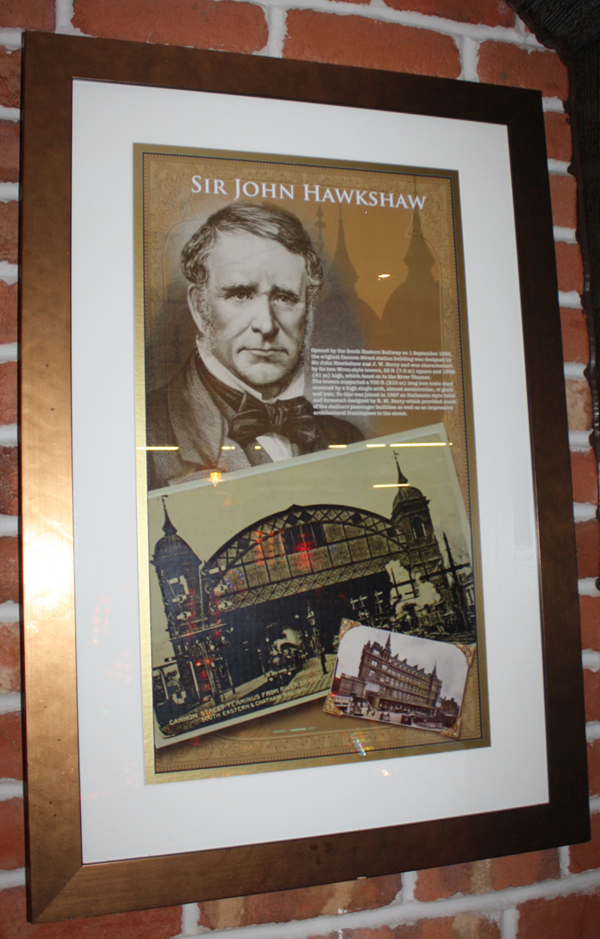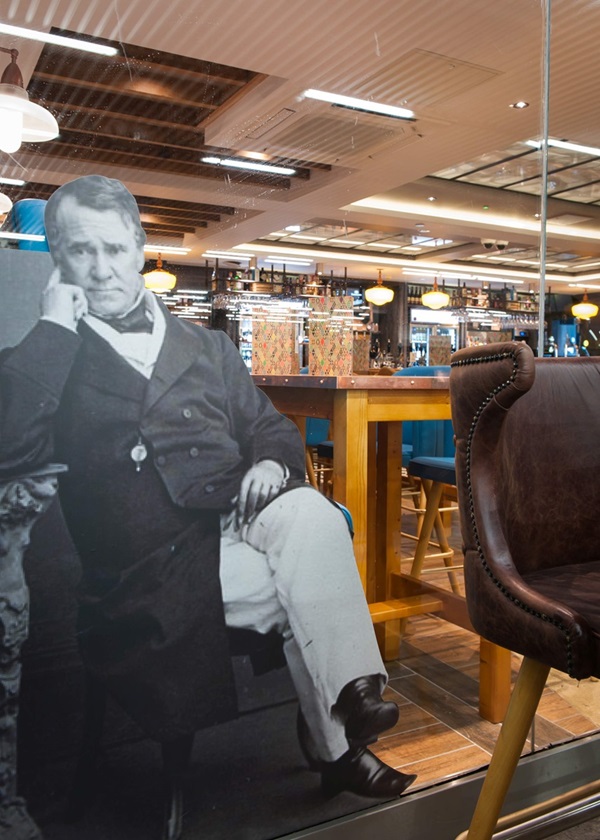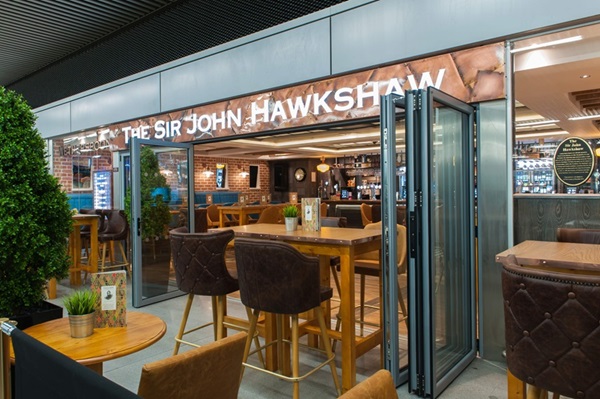Far below this railway station are the remains of a Roman palace, built in the 1st century. The ‘Steelyard’, used by German and Flemish merchants, stood here from the 10th century until it was destroyed by the Great Fire of London (1666). The Livery Hall, built by the Company of Plumbers, occupied the site from 1690 until the 1860s. It was replaced by Cannon Street Station, designed by Sir John Hawkshaw.
A framed drawing and text about Sir John Hawkshaw, 9 April 1811–2 June 1891.

The text reads: Sir John Hawkshaw was born in Leeds, Yorkshire and educated at Leeds Grammar School. In 1845 he became chief engineer of the Manchester and Leeds railway, introducing steeper gradients than any previously built.
He is primarily recognised for his work on the Cannon Street railways, with their bridges over the River Thames and the East London Railway.
Other notable projects included the design of the near mile-long bridge over the Narmada River in India, engineering work for the Amsterdam ship canal and his decisive reports on the Suez Canal.
Framed photographs and text about Sir John Hawkshaw.

The text reads: Opened by the South Eastern Railway on 1 September 1866, the original Cannon Street station building was designed by Sir John Hawkshaw and J.W. Barry and were characterised by its two Wren-style towers, 23ft (7.0m) square and 135ft (41m) high, which faced to the River Thames.
The towers supported a 700ft (210m) long iron train shed crowned by a high single arch, almost semi-circular, of glass and iron. To this was joined in 1867 an Italianate style hotel and forecourt designed by E.M. Barry which provided much of the station’s passenger facilities as well as an impressive architectural frontispiece to the street.
A framed photograph and text about Cannon Street Station.

The text reads: Opened on 1 September 1866 the original station building was designed by Sir John Hawkshaw and J.W. Barry. The two Wren style towers facing the Thames stood 135ft high and supported a 700ft long train shed crowned by a single arch of glass and iron. In 1867 an Italianate style hotel and forecourt designed by E.M. Barry was added to provide passenger facilities.
A photograph of Sir John Hawkshaw, displayed in the front window of the pub.

External photograph of the building.

If you have information on the history of this pub, then we’d like you to share it with us. Please e-mail all information to: pubhistories@jdwetherspoon.co.uk